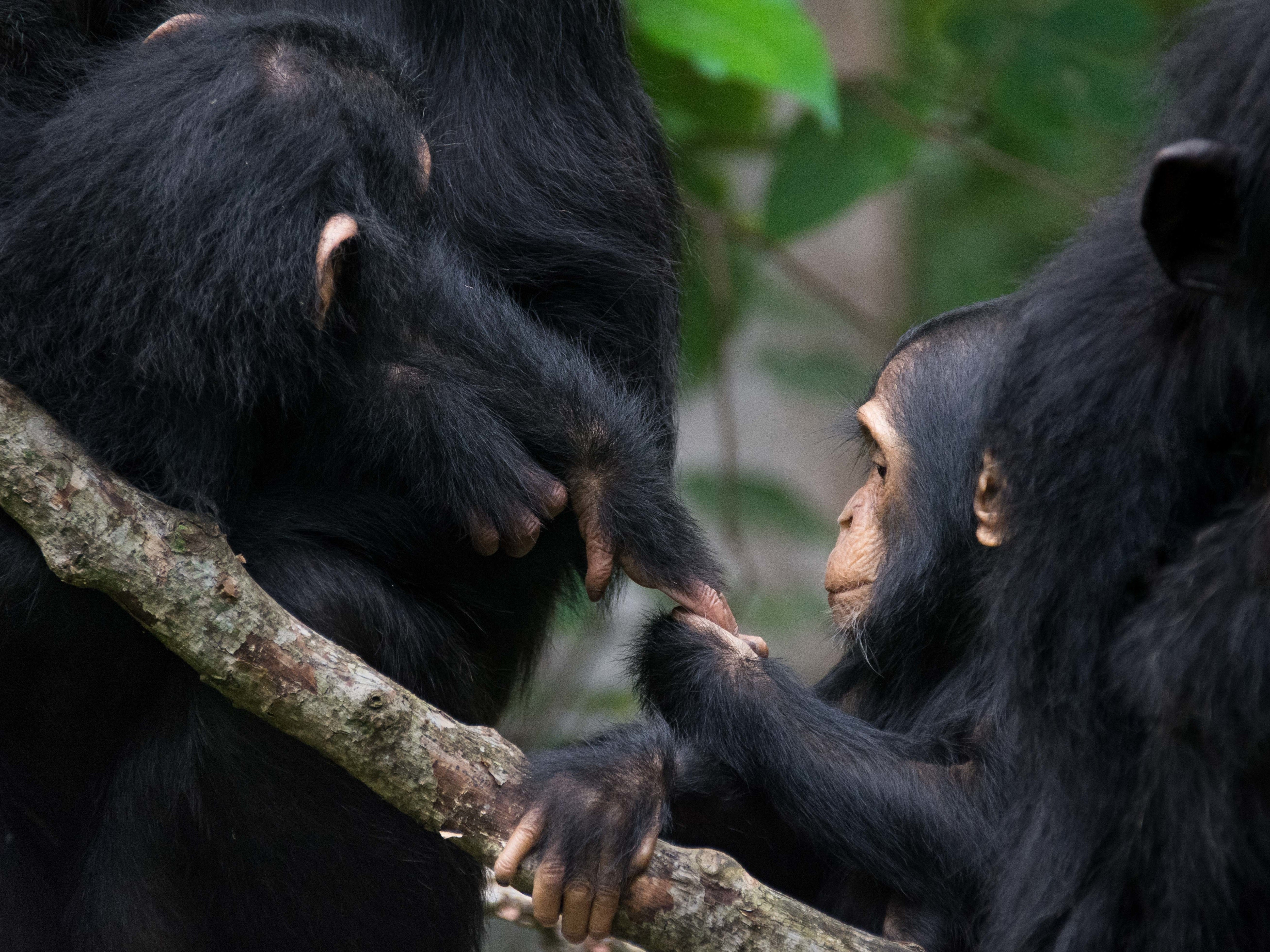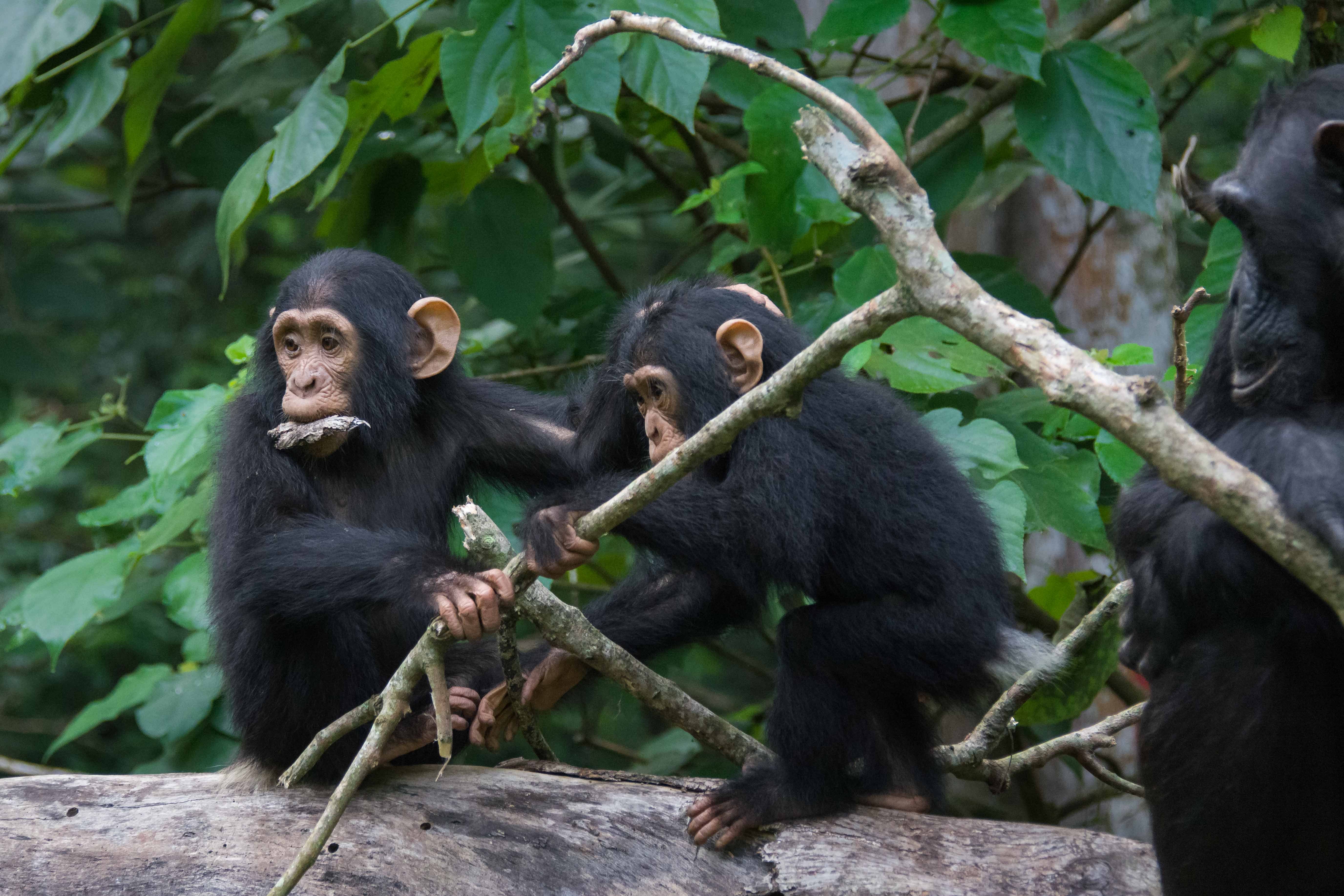Scientists find amazing similarities between chimpanzee and human conversations
The researchers say the findings could help us understand why humans’ turn-taking conversation structure developed

Your support helps us to tell the story
From reproductive rights to climate change to Big Tech, The Independent is on the ground when the story is developing. Whether it's investigating the financials of Elon Musk's pro-Trump PAC or producing our latest documentary, 'The A Word', which shines a light on the American women fighting for reproductive rights, we know how important it is to parse out the facts from the messaging.
At such a critical moment in US history, we need reporters on the ground. Your donation allows us to keep sending journalists to speak to both sides of the story.
The Independent is trusted by Americans across the entire political spectrum. And unlike many other quality news outlets, we choose not to lock Americans out of our reporting and analysis with paywalls. We believe quality journalism should be available to everyone, paid for by those who can afford it.
Your support makes all the difference.Scientists have found ‘amazing’ similarities between chimpanzee and human conversations.
Chimpanzees in the wild take it in turns to “speak” during conversations in the same way humans do, researchers have found.
The study, led by scientists at the University of St Andrews, Fife, found that when gesturing to each other in the wild, chimpanzees left similar gaps before responding to those left during conversations between humans.
These ranged from interrupting the other “speaker” more than a second-and-a-half before they finished gesturing, to responding eight-and-a-half seconds later.
Humans typically leave just a fifth of a second before replying during a conversation.
Professor Cat Hobaiter, a primatologist at the University of St Andrews, said: “It’s amazing to see how close the chimpanzee and human timings were — and that, just like us, the chimpanzee sometimes even interrupted each other midway through a gesture.
“The chimps had a bigger range in timings: the gaps ranged from interrupting the signaller 1,600 milliseconds before they finished their gesture, to taking 8,600 milliseconds to respond.
“This could be because the chimps were in a natural setting, unlike the humans who were observed, and so could express a wider range of behaviour – sometimes interrupting each other and other times taking a long time to respond.”

The researchers, who studied the behaviour of five communities of wild East African chimpanzees in rainforests and woodland in Uganda and Tanzania, also found small differences in conversation timings between chimpanzee groups.
Professor Hobaiter said: “We’re still trying to work out why but the Sonso chimpanzees in the Budongo Forest in Uganda seem to be the slow ‘talkers’, taking their time to reply, while just down the road the Kanyawara chimpanzees are speedier!”
Dr Gal Badihi, lead researcher on the study, explained that chimpanzees used communication to avoid conflict and co-ordinate with each other.
“It’s fascinating to witness how chimpanzees interact with each other and the world,” she said.
“Their societies are quite similar to ours – they spend time in large groups, break up into smaller parties and then come back together.
“Communication helps chimpanzees avoid conflict and co-ordinate with each other. Their gestures allow them to communicate over short distances to achieve social goals in the moment.
“So, one chimpanzee could gesture to another that they want food, and the other might give them food or, if they feel less generous, respond by gesturing for them to go away.
“They might come to an agreement about how or where to groom. It’s fascinating and done in just a few short gesture exchanges.”
The researchers say the findings could help us understand when and why humans’ turn-taking conversation structure developed in the way it has.
Dr Badihi said: “We still don’t know when these human conversational timing patterns evolved and for what reason.
“Looking into more distantly related species will be a great way to better understand when and why these conversational rules evolved.”
The study, which is published in the journal Current Biology, involved the analysis of more than 8,500 gestures from more than 250 individual chimpanzees, the largest ever database of wild chimpanzee gestural communication.
Join our commenting forum
Join thought-provoking conversations, follow other Independent readers and see their replies
Comments